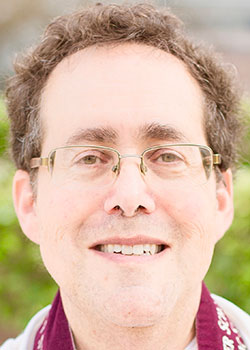After two days of Rosh Ha-Shanah and a day of fasting on Yom Kippur, you would think that Jews would be exhausted. Enough Judaism, already!
Yet at precisely that time, the calendar of Judaism presents a dazzling array of festivals--Sukkot, Hoshanah Rabbah, Sh'mini Atzeret, and Simhat Torah. For more than a week, we continue to celebrate one holiday after another, each with its own set of rituals, songs, and customs.
Of all the festivals, none has as many mitzvot (commandments) and customs associated with it than does Sukkot, the Festival of Booths. We build special huts (the sukkah), carry the four types of plants (the lulav--palm frond, etrog--citron, aravah--willow, and hadas--myrtle) and eat festive meals in the sukkot. Some Jews even sleep in their sukkot.
Exhausted by the holy days already behind us, and living in a culture that distrusts ritual in the first place, what can this frenetic activity mean to us?
Traditional commentators have explained the lulav and etrog in several ways:
According to the Midrash Va-Yikra Rabbah, the etrog, hadas, and aravah symbolize the three Patriarchs: Abraham, Isaac, and Jacob. The single Lulav symbolizes God. By holding the three against the Lulav, we act out our hope that the sacred deeds of our ancestors, the lessons learned throughout our lengthy history, will serve us well before God. Thus, lulav and etrog demonstrate our link to Jewish history throughout time.
According to Pesikta De-Rav Kahana, each of the plants symbolizes a different type of Jew: one who is learned in Torah and rich in good deeds, one who is learned but has performed no good deeds, one who is uneducated but active in demonstrating lovingkindness, and one who is uneducated and has not performed loving deeds. By binding all four plants together, we pray that God will also consider the entire Jewish people as a single unit, each responsible for the other, each Jew compensating for the shortcomings of the others. Thus, lulav and etrog demonstrate our unity as a people and celebrate our diversity as individuals and as religious movements within the umbrella of Judaism.
Finally, the medieval compilation Kad ha-Kemah asserts that each of the four species corresponds to a different human organ: the heart, the spine, the eyes, and the lips. Just as all these organs can lead a person to error and to pain, so too they can become the means for self-improvement and for elevating others. Thus, lulav and etrog demonstrate our determination to use our bodies to help other people and ourselves, to serve God, and to make the world more holy.
Each of these explanations works from the bottom up, trying to account for the details of an already established observance. Perhaps another approach would be to work from the other direction, to explain the larger picture and not worry about the details. So, for example, in Midrash Va-Yikra Rabbah, Rabbi Avin compares the lulav and the etrog to a scepter awarded to a victorious combatant. After returning to our synagogues in massive numbers on Rosh Ha-Shanah, after spending Ten Days of Repentance considering who we are and who we want to be, after fasting and praying on Yom Kippur, the entire Jewish people emerges energized, enriched, and motivated.
Such a transformation is indeed a victory. Carry your lulav and etrog with joy!


 Download PDF
Download PDF